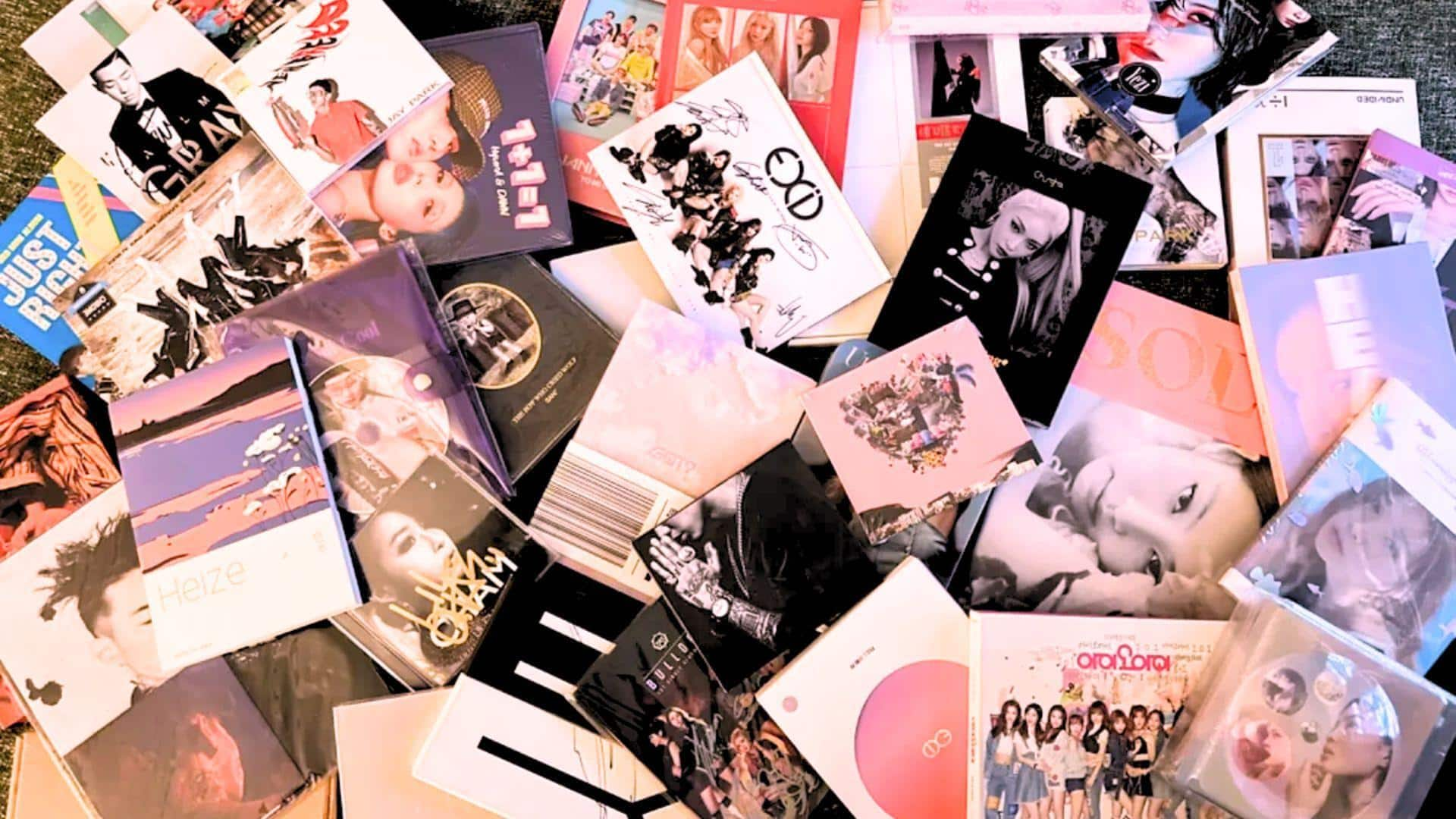
Explainer: Why physical albums are still popular among K-pop fans
What's the story
It's 2024, but K-pop fans continue to purchase CDs! Every year, bands like EXO, Stray Kids, and BTS sell millions of physical copies of their albums. Interestingly, while CD sales have surged, there has been a substantial decline in CD player purchases. This raises a question: In this digital age, overwhelmingly tilted toward streaming, what motivates fans to invest in physical albums? Let's investigate.
Context
Why does this story matter?
Despite the rise of digital streaming, the Korea Consumer Agency reported a surge in physical CD sales in South Korea, from 25 million in 2019 to 77 million in 2022. According to the Circle Chart, cumulative CD sales for K-pop albums crossed 115 million in 2023. However, CD player sales have notably declined, signaling that fans are buying CDs for some other reasons!
Reason
Physical albums offer much more than just music!
Many industry experts attribute the success of K-pop to the appeal of collectibles. K-pop albums not only feature variant covers and soul-stirring tracks, but also include extras like collectible photos, metallic-looking holographic-foil cards, posters, stickers, and, sometimes, handwritten letters by the artists. With up to 50 different collectible cards produced per album, fans often buy multiple CDs to complete sets or find rare cards.
Profit
Companies rely on physical albums for sure-shot revenue
Understandably, companies produce albums for profit, while fans purchase them for access to fan meetings and symbolic reasons. Lee Gyu-tag, a cultural studies professor, earlier noted that albums have transformed into merchandise, serving as markers of a star's popularity. Despite the acknowledgment that physical albums are no longer essential for listening, companies rely on them for revenue since online streaming might proved less lucrative.
US market
Is it a similar practice in the US market, too?
The practice of American artists offering special physical editions is less common compared to the widespread trend in K-pop. However, most recently, artists like Taylor Swift adopted this approach. For her 2019 album Lover, a deluxe physical version featured a journal by Swift. This contributed to Lover achieving the biggest sales week of 2019, selling approximately 450,000 physical copies on its first day.
Breaking from conventions
These artists tried to release albums in pen drive
Moving away from the CD album trend, singer Kim Jang-hoon became the first artist to release his album on a pen drive in 2012. Later, BIGBANG's G-Dragon released his solo EP on a pen drive in 2017. It sparked debate on whether it qualified as an album—the pen drive didn't contain tracks but directed listeners to a streaming platform. Ultimately, it was ruled out.
Type of album
There exists another type of album, Kihno
In 2014, a unique kind of album, the Kihno, was introduced. Similar to a mini-disk with a headphone jack, these albums originally required a dedicated Kihno player for music playback. Nowadays, fans still buy the physical Kihno album, but can opt for music downloads through a mobile app. Both Hanteo Chart and Gaon Chart count Kihno album sales as part of overall album sales.
Impact
Environmental impact on growing CD waste issue
Meanwhile, a surge in K-pop CD sales is causing environmental concerns in Korea, as discarded CDs contribute to plastic waste in landfills. Per a Korea Consumer Agency study, 53% of K-pop fans buy CDs solely for the accompanying merchandise, not for listening. The Korean Federation for Environmental Movement called for legislation to address and reduce the environmental impact of this growing CD waste issue.